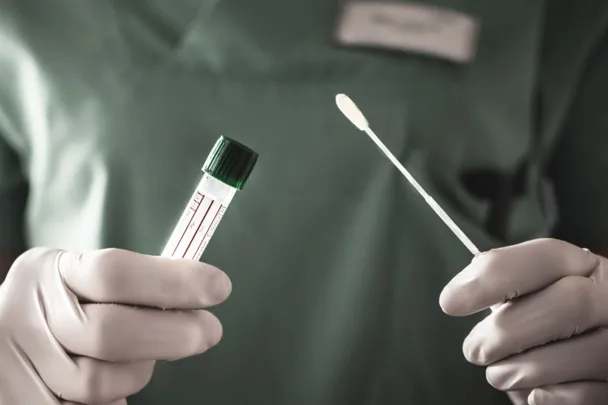In a world first, Australia will be offering self-testing swabs to all women due for their cervical cancer screening.
From July 1, women between the ages of 25-74 can collect their own sample to test for HPV (human papillomavirus), rather than undergoing a speculum examination.
The news comes as part of a major update to the National Cervical Screening Program which aims to reduce illness and death associated with cervical cancer, with studies showing that a self-test is just as effective at detecting HPV as cervical screening done using a speculum.
Until now, there was strict eligibility criteria involved for self-testing, with it mostly offered to women who were overdue or who had never been screened for cervical cancer. Now, it will be offered to most people with a cervix who are due for screening.

The current process, which is quite invasive and uncomfortable, can often be off-putting, with the new changes hoped to reduce stigma and fear associated with testing.
Speaking to The Guardian Australia, Professor Marion Saville, executive director at the Australian Centre for the Prevention of Cervical Cancer said that changes to the testing would be game-changing for a variety of women, including survivors of sexual abuse, Aboriginal and Torres Strait Islander women and trans men with cervixes, to name a few.
“There have been a proportion of people that we have never reached with the screening program, and we are never going to reach with a speculum,” she told the outlet. “For cultural or religious reasons some communities are not comfortable with speculum insertion even when it is done by a woman,” she said.
The new testing will allow a doctor to explain the swabbing process to the patient, before they move to a private room to administer the test and return the swab to their doctor. As for why the test can’t be done at home, Professor Saville explained that a higher uptake of testing has been observed when patients physically go to the doctor. Other home testing options (like bowel cancer) are often missed or forgotten about, so actually presenting at the GP adds an element of accountability.
It’s important to note that a speculum test may still be necessary, particularly for patients whose symptoms suggest cervical cancer, people being treated for abnormal cells on their cervix associated with HPV, and patients with other health conditions.

According to Cancer Council Australia, our nation’s rates of cervical cancer incidence and death are among the lowest in the world, which is is largely attributed to the 1991 introduction of the National Cervical Screening Program.
That being said, an estimated 900 women were diagnosed and 237 died of the disease in Australia 2021.
Back in 2017, the HPV test replaced the pap smear. Rather than occurring every two years and searching for abnormal cells like the Pap test, HPV testing takes place every five years and looks for human papillomavirus, which can lead to cell changes in the cervix that can cause cervical cancer.
Prof Karen Canfell, the director of The Daffodil Centre, a joint initiative between Cancer Council NSW and the University of Sydney, told The Guardian Australia that Australia is on track to eliminate the cancer between 2028 and 2035. She says, however, that it isn’t solely about achieving elimination, it’s also about achieving equity for those groups who are typically missed or disadvantaged.










